What is daikon: properties, cultivation, storage
In every country there is a type of vegetable that has a sharp taste and bitterness. For Russian people it is black radish, which has been consumed since ancient times. The useful properties of the vegetable were used for colds, to increase appetite. In the countries of the East, the daikon has similar properties.
The daikon became famous recently due to the fact that this root vegetable, in contrast to black radish, has a more delicate taste. Otherwise, their properties are very similar. The Japanese especially appreciate the benefits of the root crop, growing it in large areas.
Content:
- What is daikon?
- Useful properties of a vegetable, where they are used
- Who is contraindicated in radish?
- The best daikon varieties
- Features of growing Japanese radish
- How to choose and store daikon correctly
What is daikon?
Daikon belongs to the known subspecies radish... Unlike its relative, the vegetable resembles its length in shape carrot, but only a larger one. The color of the root vegetable pulp is white, slightly bitter to taste with a slight hint of sweetness.
Daikon comes from Japan, so it is called Japanese radish, white radish.
In taste, the fruit of the vegetable resembles a turnip or cabbage stump, with which they are close relatives. The daikon's skin is thin, and the flesh is tender and juicy. It has less coarse fibers and bitterness than black radish.
The garden plant belongs to biennials. The first year it gives root crops, and in the second - seeds that form in place of white flowers. In folk medicine, both daikon fruits and seeds are used. The plant belongs to environmentally friendly products, since it does not absorb from the soil those harmful substances that may be contained in it. The popularity of the vegetable among gardeners is that it tastes good, gives a piquant taste to dishes, and is good for human health.
Useful properties of a vegetable, where they are used
The rich composition of the root crop allows a beneficial effect on the work of the human body:
- The potassium and calcium salts contained in Japanese radish are characterized by the function of removing toxins and toxins, excess fluid from the body. This vegetable quality is used in dietetics.
- The content of vitamins of group B, P, as well as phytoncides helps to strengthen immunity, cleanse from pathogenic microbes. The best prevention of colds is the inclusion of daikon in the menu.
- Japanese radish juice is often used in kidney and liver cleansing procedures. The drink gives impetus to the better work of the pancreas, helps to remove stones from the organs of the excretory system.
- Calm the nervous system, normalize sleep - another properties of daikon. Daily intake of root vegetable juice will eliminate aggression, increased excitability.
- The role of fructose in the vegetable will help a diabetic to normalize blood sugar levels.
- People with a large body mass should definitely eat daikon, as it is a low-calorie product.
- White radish-based products are used to eliminate pathologies associated with a malfunction of the cardiovascular system. Daikon on the table will lower blood cholesterol, strengthen the walls of blood vessels.
The cosmetic effect of the white root is amazing. Lubricating problem areas of the skin with radish juice, you can get rid of age spots, freckles. It is irreplaceable in the treatment of acne, acne, purulent formations. Perfectly strengthens the hair from daikon, so rubbing the juice into the roots has a beneficial effect on their appearance.
The richness of useful properties, taste of daikon puts it on a par with other vegetables used to strengthen the human body.
Radish can be used in the form of salads dressed with olive oil. Stewed vegetable in combination with squid, meat is tasty. The grated product is an excellent seasoning for main courses. The tops of the root vegetable, which are cut, overcooked, seasoning soups, is also useful.
Freshly squeezed juice of Japanese radish is used for medical and cosmetic purposes. The Japanese use the hard root vegetable to decorate their homes, carving figures and masks from it.
Who is contraindicated in radish?
The ban on the use of vegetables, of course, exists, since many substances contained in the root vegetable can exacerbate diseases of the digestive tract. This refers to the acute form of gastric and duodenal ulcers. Irritation caused by eating daikon food can even lead to bleeding in these organs.
Quite a few contraindications exist for the use of this unique type of radish.
Due to the high content of fiber, which is difficult to digest, in the intestines after taking Japanese radish, an increased process of gas formation occurs. Hence the manifestations of flatulence, indigestion. With caution, you need to use the vegetable for renal and hepatic insufficiency. This rule also applies to women preparing for motherhood or nursing a newborn.
The best daikon varieties
For many years, summer residents have allocated a corner for planting a daikon on their site. Breeders have developed many varieties of root crops that ripen in the early, middle and late periods, which allows the vegetable to be eaten during the summer.
Of the best varieties of plants, the following can be noted:
- Within two months, the Rhino, which has excellent taste and large fruits, ripens. The variety is characterized by high yield, resistance to flowering.
- The Astor fruit, similar to a white icicle, has an excellent taste, juicy transparent pulp. From one square meter, you can get up to six kilograms of fruit.
- For long-term storage, Dubinushka with a root crop in the shape of a cylinder weighing up to two kilograms is suitable. Daikon of this variety is loved for its juicy white pulp, pleasant taste.
- A variety of white radish is protected from diseases - the Emperor. Smooth white icicles are suitable for salads and for making healing juice from them. Root crops are preserved for a long time, without rotting and without becoming flabby.
- Forms the harvest amicably, daikon Sasha is not afraid of frost. In forty days, you can get fruits weighing up to four hundred grams. They are very tasty, juicy, beautiful in shape.
Many types of daikon are similar in shape, the fruits are white and juicy. They differ from each other only in terms of ripening, sharpness of taste.
Features of growing Japanese radish
Sowing daikon begins depending on the variety and purpose of the vegetable. The best time to plant seeds is the end of June - July. If you plan to use the vegetable in the summer, then you need to sow it in May. For planting, choose fertile soils with a normal level of acidity.
The vegetable grows well in partial shade with sufficient soil moisture.
One-line rows are prepared for the plant with a distance of forty centimeters, embedding seed material to a depth of three centimeters. The first shoots hatch quickly - on the fifth or seventh day. After that, the beds are fed organic fertilizer - humus. With a dense planting, the seedlings must be thinned out twice during the growing season.
The culture is unpretentious to care.It is important to feed the vegetable plantings not only with organic matter, but also mineral complexes... This is only for the benefit of growing root crops.
The basic rules for caring for a daikon are timely weeding, hilling, loosening. With proper care, the harvested root vegetables will be soft, juicy, tasty.
How to choose and store daikon correctly
After the radish ripens, they begin to harvest it. It is advisable to dig up roots in dry weather, before the cold comes. After drying the white radish, clean it from the ground by cutting off the tops. In this case, it is necessary to sort the fruits, selecting the flabby ones, damaged during digging.
It is necessary to make sure that the skin of the vegetable is smooth, white, without rot and black spots.
After selection, the crop is put into wooden boxes, covered with wet sand. It is best to store the vegetable in cool rooms at a temperature of no more than one degree of heat and not below zero.
You can dip each root crop in a clay mash before laying. This will allow the product to remain fresh until January. Correct harvesting is the key to long-term storage of the vegetable.
More information can be found in the video:



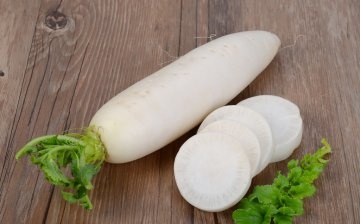
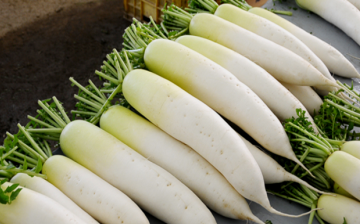

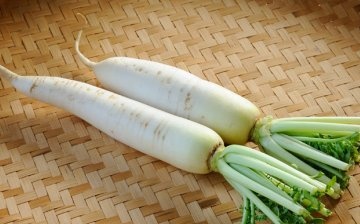
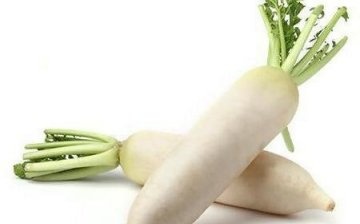
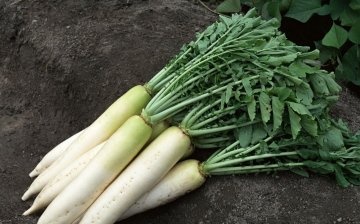
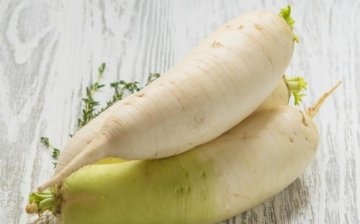








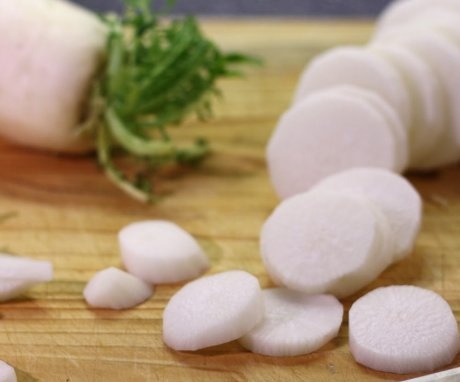
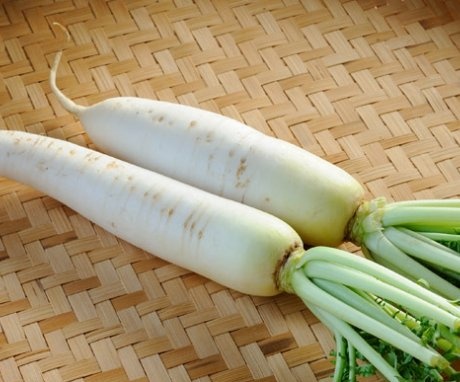
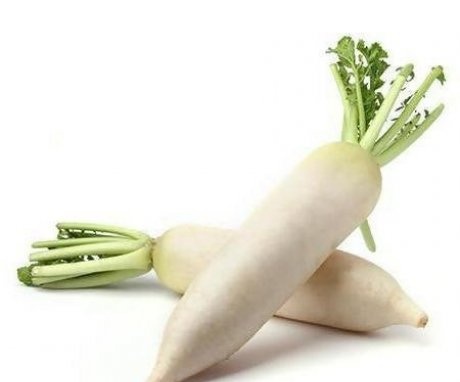

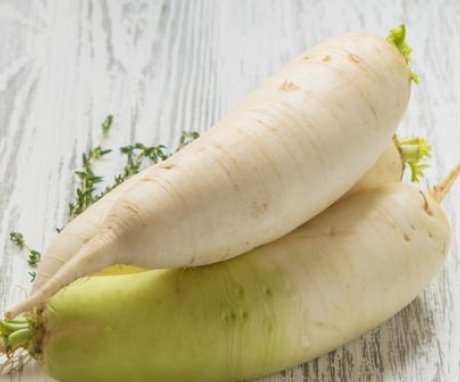
I looked after the daikon for a long time. At first I did not understand what it was, but when I tried the salad, I finally changed my mind about this vegetable. With the onset of autumn, the daikon is brought to local markets. And then our family eats a salad with carrots, apples and daikons. It's amazingly delicious!
We have an early landing of a daikon (May-June) almost always comes to the fact that it is "in color". July, and even towards the end of this month, is the ideal time to plant. Has time to grow, we dig it out before the very frosts, one of the last. Stores well until the New Year, then becomes soft.
By the way, this year the daikon is simply gorgeous - juicy tender, and no bitterness!